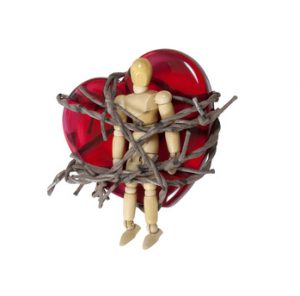The Healthy Balance of Family
Establishing a healthy family is a balancing act. It requires finding the best blend between diametrically opposed traits. For instance, a healthy family finds balance in at least these three areas:
- A healthy family lives in the balance between structure and freedom. Too much structure and a family becomes rigid. Spontaneous fun and laughter disappear. Family members feel trapped and imprisoned by the constant demands of an imposed and unbending structure. Too much freedom, on the other hand, and a family experiences chaos. Limits and boundaries become broken or even disappear. Predictability flies out the window and, as a result, family members experience insecurity, confusion, and even fear. Healthy families find a balance between these two extremes by establishing a flexible structure. Flexible structure provides a daily family schedule and daily routines while leaving room for down time and unstructured play. It leaves open the possibility of making adjustments as situations and circumstances change. A flexible structure provides the best of both worlds: structure and freedom.
- A healthy family lives in the balance between connection and independence. Too

much connection and family members becomes entangled and boxed in. They feel intruded upon, unable to develop their distinct interests or pursue their individual opportunities. No one can develop their individuality, their unique character. Each person in the family will even experience great difficulty establishing their identity. Move too far toward independence, however, and family members find themselves alone, isolated, and without support. They have no one with whom they can enjoy life, no one to help them develop as unique individuals. We need relationships to discover our own identity. Healthy families find balance between these two extremes by developing interdependence. Interdependence empowers family members to engage one another and enjoy individual time. Relationships become the springboard for individual identity development by providing a safe harbor from which to explore interests and ideas as well as a safe haven in which to find comfort and reassurance. Interdependent relationships become the place of safety, comfort, encouragement, and empowerment for each individual and the family as a whole.
- A healthy family lives in the balance between “mine” and “yours.” Too much focus on “mine” and family members becomes self-absorbed and self-centered. Stinginess undermines sharing. Greediness leads to excessive competition for resources that everyone perceives as limited. But, when the focus turns completely to “yours,” at least one person becomes a doormat. After time, she will feel taken for granted and used. Eventually, she will rebel. She may lash out in anger or shut down in defeat, bitter and resentful. The whole family suffers as a result. Healthy families balance “mine” and “yours” with “ours.” Finding “ours” is no easy task. It requires a growing knowledge of each family member. It demands a long-term vision, a willingness to postpone “my own” agenda and even sacrifice for the good of the family. In short, finding “ours” requires love and acceptance. “Ours” presupposes differences but learns to tolerate, accept, and even celebrate those differences as opportunities to learn, love, and serve.
How does your family balance these three areas?
-0 Comment-